Bijan Feriduni, MD



In women with PCOS(polycystic ovarian syndrome), high levels of androgens (male hormones) in the body may cause hair loss. DHT (dihydrotestosterone), more abundant in men, is created from a combination of testosterone and5-alpha-reductase enzymes. DHT can bind to hair follicle sites, accelerate the natural hair growth cycle, and cause hair to go into resting (catagen) sooner causing thinning hair with each cycle.
Women with PCOS are more susceptible to androgenic alopecia, more commonly referred to as male pattern baldness or genetic female hair loss. Androgenic alopecia is also the number one cause of hair loss and thinning hair in the world.Women with androgenic alopecia typically lose hair in a pattern similar to the ludwig scale,and less commonly the norwood scale.
If you suspect you have PCOS, you should consult with a physician and get tested for it. Only a physician can diagnose you and recommend a proper treatment.

Some day, perhaps in the distant future, baldness may become a curable aliment. Scientists are currently researching gene therapies to alter a person's genetic vulnerability to hair loss. However, the actual implementation of such hair loss treatments may be decades away.
In the near future, drug treatments which inhibit the balding process seem more promising. The hair loss drug Propecia (finasteride) has been proven successful in slowing and/or stopping hair loss by blocking the conversion of testosterone into dihydrotestosterone (DHT) in the scalp.
Another promising drug that inhibits the development of hair loss causing DHT hormones is Dutasteride.
Like Propecia, it also inhibits the creation of DHT. And based on preliminary clinical studies, dutasteride promises to be even more successful than Propecia in inhibiting the production of DHT.
In addition, Dutasteride inhibits the activities of two types of 5-alpha-reductase enzymes. In contrast, Propecia (Finasteride) only inhibits one type. Dutasteride has been shown to decrease levels of DHT by 90% after only two weeks, making it a more powerful and faster-acting weapon against hair loss than Propecia (Finasteride).
Dutasteride is not yet FDA approved for the treatment of hair loss. However, it is being marketed as Avodart by GlaxoSmithKline as a hair loss treatment. Some hair restoration physicians also prescribe it for the treatment of hair loss. Like Propecia, Avodart is not safe for women and children.
In time, perhaps even more effective hair loss drugs will be developed to inhibit the hair loss process.
The amount of hair you can transplant is ultimately limited by the amount of hair follicles you can safely relocate from the bald resistant donor area at the back and sides of your head.
Some day it may be possible for physicians to create multiple hair follicles from one original follicle. This process typically called "hair cloning" or more correctly "Hair Multiplication" is currently being investigated by several research scientists and hair restoration physicians.
If and when this process is successfully developed patients would no longer be limited by the finite amount of bald resistant hairs that can be relocated from their donor area. Hair multiplication would result in a virtually limitless supply of hair available for hair transplantation.
This would be especially good news for men or women with extensive baldness and a very limited supply of donor hair. Even those with extensive baldness would theoretically be able achieve thick full heads of hair.
However, experts believe that we are at least ten years away from hair multiplication being available, if even then.
For most men and women, hair loss can be effectively halted or even reversed with current hair loss treatments. But the future holds the promise of even more effective treatments and perhaps some day even a "hair loss cure".


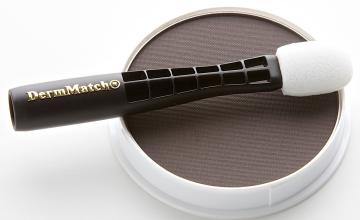
For many balding men and women worldwide, credible hair loss concealers like DermMatch are an important part of their daily routine. By utilizing concealers, individuals with thinning hair are able to increase the appearance of follicular density and recreate a thicker, fuller head of hair all with a single topical application.
Like any other hair loss treatment, concealers must be reviewed, clinically tested, and proven before receiving any endorsement from this website community. However, after reviewing both the product and patient testimonials on our open hair loss forum, one thing is clear: DermMatch is a dependable, hair loss concealer that has been proven effective by the overall patient community.
Unlike other "sprinkle," "spray," or "lotion" concealers, DermMatch utilizes a patented "EZ Grip, EZ Reach" applicator to evenly distribute a hard-packed powder formula over a hair loss sufferer’s scalp. In addition to "matching" the patient’s scalp to their natural hair color (minimizing the contrast between scalp and hair, and truly concealing baldness), the DermMatch powder formula coats, thickens, and volumizes existing hair.
Because DermMatch minimizes the appearance of hair loss by matching scalp to hair tone, the product is available in 8 different shades, and creates an integrated, natural look for all hair colors and types. Furthermore, if consumers require a highly specialized color, DermMatch shades can be mixed to truly mimic the appearance of any complex hair tone. Additionally, because of the ease of the "EZ Grip, EZ Reach" applicator, DermMatch is particularly useful for recreating or matching shortly cropped hair, mimicking natural hairlines, and diminishing the appearance of previous hair transplant surgery scars.
In addition to simple application and a natural appearance, DermMatch is extremely resilient, and can withstand excessive sweating, wind stress, and even full water submersion. According to the makers of DermMatch, the product’s all natural ingredients, including emollients, botanicals, and other organic elements, coat the hair and scalp, and protect from unwanted and unexpected stessors. By adding this level of protection, DermMatch will resist the running, flaking, and smudging associated with other, less effective concealers. Furthermore, because DermMatch does not contain any unsafe dyes or colorants, it will not dry/irritate the scalp or affect any new or existing hair growth.
According to the makers of DermMatch, the product is useful for all hair loss sufferers (both male and female), and provides aesthetically pleasing results in patients with up to 80% decreases in hair density. Furthermore, DermMatch can be used with other proven hair loss treatments like Propecia (finasteride), Rogaine (minoxidil), and surgical hair transplantation. Because of its efficacy, usability, and popularity with hair loss sufferers, DermMatch is highly recommended to any individual seeking a quality concealer.
For step by step instructions on how to apply DermMatch to thinning areas including photos and an in-depth discussion with other hair loss sufferers, visit the discussion topic "DermMatch (Pictures)". To see what other members and DermMatch consumers are saying, you are encouraged to use the "search" feature of our hair restoration discussion forum.
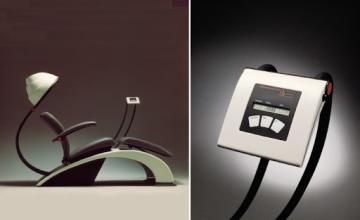
ElectroTrichoGenesis (ETG), also known as Cosmetic TrichoGenesis (CTG), is a little known hair loss treatment that makes some very lofty hair growth claims. How does ETG work and is it really clinically proven to treat androgenic alopecia(genetic balding)?
ETG is promoted as a safe, painless and non-intrusive. Treatment is administered via an “ergonomically shaped couch with a semi spherical hood” manufactured by Current Technology Corporation in Vancouver, Canada.
The patient reclines on the chair and the hood (with disposable liner) is placed over the head but does not make contact with the scalp. This special hood contains electrodes that deliver “specified pulsed electrostatic energy” delivered passively to the scalp by the low-level electric field generated within it.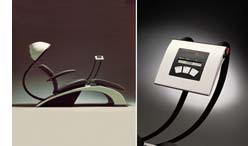
ETG is believed to stimulate the regrowth of hair through the positive influence of the pulsed electrostatic field it generates. This field is said to stimulate “changes within the hair bulge and the follicle, stabilizing hair loss and stimulating new hair growth”. Patients receive a single 12 minute session weekly.
The following three studies on the efficacy of ElectroTrichoGenesis (ETG) as a treatment for thinning hair have been published in peer-reviewed journals:
Maddin, W. Stuart; Bell, Peter W.; James, John H. M. (1990).
"The Biological Effects of a Pulsed Electrostatic Field with Specific Reference to Hair Electrotrichogenesis". International Journal of Dermatology29(6): 446–450.Benjamin, Benji; Ziginskas, Danute; Harman, John; Meakin, Timothy (2002).
"Pulsed electrostatic fields (ETG) to reduce hair loss in women undergoing chemotherapy for breast carcinoma: A pilot study". Psycho-Oncology11(3): 244–248Maddin, WS; Amara, I; Sollecito, WA (1992).
"Electrotrichogenesis: further evidence of efficacy and safety on extended use". International Journal of Dermatology31(12): 878–80
According to the 36-week comparative, controlled study conducted on male subjects at the University of British Columbia and published in The International Journal of Dermatology, 96.7% of those treated experienced cessation of hair loss and/or hair regrowth. Decreased hair loss was seen as early as 4 to 6 weeks but many patients required more time for results.
The pilot study conducted on women undergoing chemotherapy for breast carcinoma and published in Psycho-Oncology,showed that twelve out of 13 participants had good hair retention throughout the chemotherapy period and afterwards with no reported side effects.
As with the clinically proven medical hair loss treatments Rogaine (minoxidil) and Propecia (finasteride), ETG is said to be most effective in the early stages of balding.
Although the data put forth in this article seems to paint ETG as a clinically proven and highly effective hair loss treatment, it’s important to note that the procedure is not new. The studies referenced above were published more than 13 years ago. If ETG truly works to stimulate hair growth and suppress the advancement of hair loss, why has it not become a fixture in the world’s leading hair restoration clinics? Where are all the glowing, unbiased reviews?
With no reported side effects, there may be no harm in giving ETG a try if there is a provider in your area and the fees are reasonable. However, balding men and women are encouraged to consult with an experienced and reputable hair restoration physicianin order to diagnose the cause of their thinning hair and learn about the outstanding medical and surgical options available today.
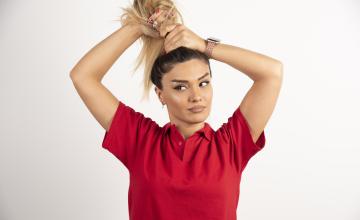
Traction alopecia is a form of hair loss resulting from the repeated yet unintentional pulling, twisting or rubbing of the hair. Traction alopecia can affect both men and women, though it's more commonly seen in women. Though it can be temporary, balding from traction alopecia may become permanent if these traumatic forces are applied to the hair and scalp repeatedly and for prolonged periods, resulting in scarring.
Practices that may result in traction alopecia include; wearing tight braids, ponytails or cornrows and extended use of hair extensions. Due to the popularity of these hairstyles, traction alopecia has become one of the leading causes of hair loss among African America women.
Balding from traction alopecia can also occur from repeatedly wearing tight-fitting hats, helmets or other headgear.This is likely where the popular hair loss myth about hats causing hair loss derived, but it is important to note that, under normal circumstances, wearing a properly fitted hat will not negatively impact hair growth.
The first step in treating traction alopeciais to change the habits leading to the condition. This may mean adopting a new hairstyle or altering your wardrobe. Finally, applying a vaso dilator like Rogaine(minoxidil) to the affected area can increase blood flow to the damaged follicles and effectively speed up new hair growth. Assuming the hair follicles have not been permanently damaged, new hair growth will likely occur though it may take several months.
In cases of severe and permanent tractional opecia, the only effective method of restoring hair to the bald areas is surgical hair restoration. State of the art, ultra-refined follicular unit hair transplantation allows quality surgeons to harvest DHT resistant hair from the donor region at the rear and sides of the head. These hairs are then implanted into the balding areas of the scalp, resulting in a natural and undetectable appearance. To see which physicians we recommend and for a free virtual consult, visit the Coalition of Independent Hair Restoration Physicians.
To learn more about how surgical hair restoration can be used to treat traction alopecia hair loss, view the following results from our hair loss forum and social community:
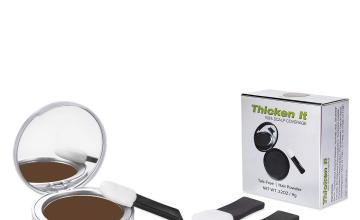
There are a variety of hair loss remedy "concealer" products that are applied to the scalp and/or hair in the thinning areas to mask a person's baldness and increase the look of fullness of thinning hairs. These products such as Toppik, Couvré, and Prothik can work surprisingly well at creating the illusion of fuller hair.
Some of our member physicians advise their hair restoration patients to use such hair loss remedy products to enhance the look of fullness in their transplanted areas. These products can also be used post operatively to hide the immediate surgery.
Toppik - Toppik is an effective, safe, and easy-to-use product that completely covers up the scalp's thinning areas.
Couvre - COUVRe is safe for men and women, easy to use, and is totally undetectable to the world's toughest critics.
Caboki - Caboki is comprised of a series of charged microfibers that, when applied to the scalp, tightly bind hair shafts and create a denser, fuller appearance.
DermMatch - DermMatch is a safe and easy way to cover-up thinning areas and instantly provides the appearance of a natural looking head of hair.
Nanogen - Nanogen is one of the fastest, easiest ways to conceal thinning hair and hair loss.
Prothik - Prothik does an exceptional job of adding thickness and fullness to thinning hair while reducing the contrast between thinning hair and the scalp.

Hair has always been an important symbol of status throughout history. Whether it signified social, financial, gender, or professional status, hair has come to be considered a sign of success. And this idea appears to go all the way back to the cavemen.
A few years ago, the frozen body of a man on the Austrian-Italian border was discovered by scientists. Upon examining the clothing and weapons found on the specimen, they were astounded to find that the body was from the Neolithic Age, making him more than 5,000 years old. They had previously thought that the body was only a few years old, based on his trimmed beard and short hairstyle. So even during prehistoric times hair care was in practice.
Even 4,000 years ago, the ancient Egyptians were searching for a hair loss cure. One “cure” used around 1500 B.C. in Egypt called for reciting a magic spell to the sun god and then swallowing a mixture of onions, iron, red lead, honey and alabaster.
Around 1100 B.C. in ancient Egypt it was popular to rub the fats of various animals onto the scalp, including those of the lions, hippopotamuses, crocodiles, ibex, serpents and geese.
Another recipe for growing hair prepared for the King of Upper and Lower Egypt included toes of a dog, refuse of dates, and a hoof of an ass. Of course, these “cures” failed to re-grow hair.
But with baldness regarded as shameful in ancient Egypt, men and women were willing to put such things on their head in the hope they would work. During these times it was believed that baldness stood for the public announcement of a man’s loss of virility.
Yes, hair loss is even mentioned in the Bible. According to this Old Testament passage God does not condone ridiculing the bald.
Kings 2: 23 “From there Elisha went to Bethel. As he was walking along the road, some youths came out of the town and jeered at him. "Go on up, you baldhead!" they said "go on up, you baldhead!" He turned round, looked at them and called down a curse on them in the name of the Lord. Then two bears came out of the woods and mauled forty-two of the youths. And he went on to Mount Carmel and from there returned to Samaria.”
As a hair loss sufferer you can take solace in knowing that today you have treatments for hair loss only dreamed of by the Kings of ancient Egypt and the emperors of Rome.
Hair loss and attempts to stop or reverse it have been around for centuries.